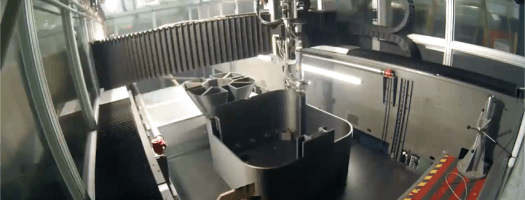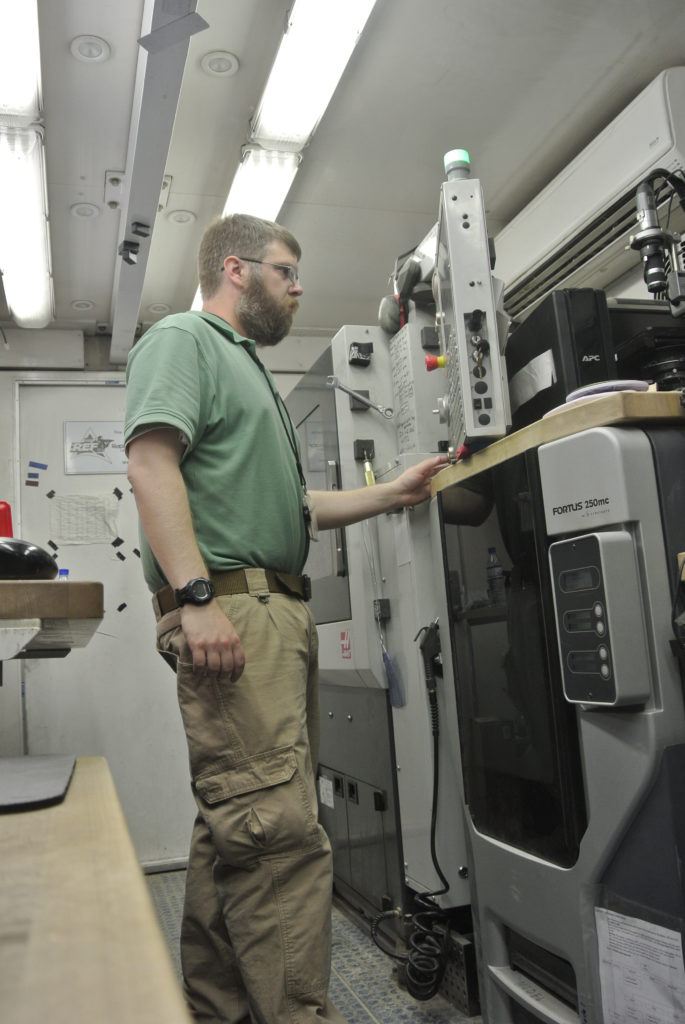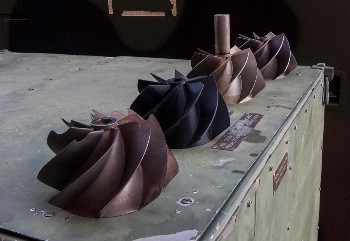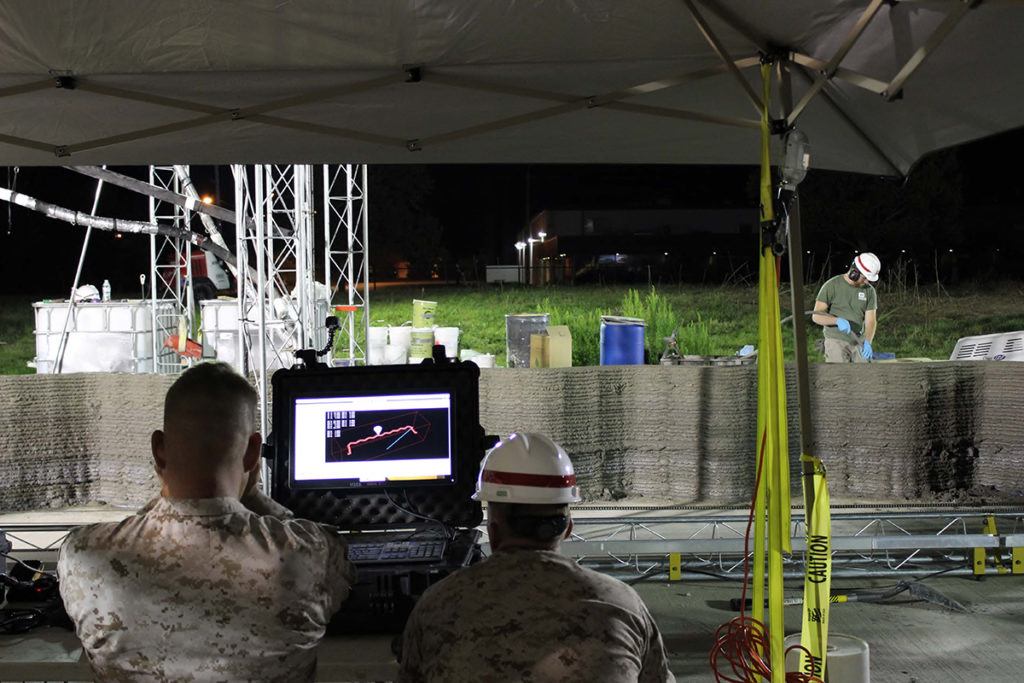DoD Additive Manufacturing: Pushing Supply Solutions to End Users

The US Department of Defense is implementing additive manufacturing capabilities across all unit levels on projects both big and small.
You are a member of a Special Operations Force (SOF) unit deployed to a remote forward operating base in Afghanistan and a part breaks on your main generator requiring the camp to run only essential equipment off of the backup generator. When you call the nearest US base, a 100 km away, they tell you that you must drive another 100 km along a heavily Improvised Explosive Device (IED) laden road to another base that has the required part in stock.
How would this scenario play out if the Department of Defense (DoD) harnessed additive manufacturing and your base had a 3d printer capable of creating this much-needed part?
The scenario above is something that countless military personnel experience while deployed to remote locations throughout the world. Simply stated, military logisticians try to stock the correct parts, in the appropriate quantities, where they are needed most. However, executing this is infinitely more challenging as across the DoD there are over 327,000 tactical vehicles and 13,900 aircraft, with items manufactured anywhere from 70 years ago to present day [1]. The current system requires carrying millions of replacement parts, including those no longer in production, in supply depots throughout the world with the final distribution facilitated by a mixture of commercial or military transportation.

A more efficient system would include forces deploying with additive manufacturing capabilities to complement existing military supply systems. Additive manufacturing allows units to build on site out of stock or custom designed items thus reducing the amount of inventory needed on hand and removing shipping time from consideration. With each C-5 transport aircraft round trip flight from the US to Afghanistan costing $917k, reducing the need for routine and expedited delivery of parts can quickly save millions of dollars [2]. Each of the services recognize the importance of implementing this strategy and have begun creating their own programs. One example is the Army’s Rapid Equipping Force (REF) Ex Labs which provides rapid prototyping and limited run manufacturing support for ongoing operations in Iraq and Afghanistan. Ex Labs consist of a 20-foot shipping and two ISU-90 equipped with 3-D printers and accompanying computer-aided design (CAD) workstations as well as traditional machine shop and electronic manufacturing equipment [3]. During a recent exercise, Marines utilizing a similar concept printed a part in four days that through conventional procurement channels had an estimated delivery date of 581 days [4]. In the short term the DoD continues to expand upon these localized additive manufacturing capabilities to reduce inventory stock and wait times.


Drawing off of these successes the DoD is looking at more ambitious in the coming years. The Navy tested to see if additive manufacturing could be used to create a SEAL Delivery Vehicle (SDV) in a quick and cost-effective manner. Utilizing a Big Area Additive Manufacturing (BAAM) machine a team of engineers were able to create a working replica in a third of the time required for traditional manufacturing while costing 90% less [5]. While this prototype was built for wave pool testing, the Navy is hopeful that within five years that prototypes will be ready for actual sea trials. Large scale projects such as the SDV provide a glimpse of what is possible with BAAM machines and the advances in metal and composites 3-D printing technology. All services across the DoD are looking to further implement this technology into new products, such as 3-D printed structures [6] and armor for non-standard vehicles [7].

While the DoD has made enormous progress in additive manufacturing over the last decade, there are additional steps that need to be taken. Currently there are no service members whose core skill sets explicitly cite additive manufacturing as a competency. Thus, many of the current additive manufacturing programs utilize non-service members to operate the machinery [8]. Just as service members are trained on conventional fabrication techniques, such as milling machines, service members need formalized and continuous education on additive manufacturing equipment to move this capability closer to end users.
Additionally, future acquisition contracts need to be constructed to allow replacement parts to be printed by end users while still respecting the intellectual property (IP) and not voiding warranties. Previous contracts do not address this issue in enough detail because the technology to recreate parts in a cost-effective manner did not exist. Moving forward it will be imperative that program managers create contracts that allow end user to create replacement parts that are of recognized standards while still compensating companies for their creations [9].
Looking forward, at what level (national, theater, tactical) should different additive manufacturing reside? How do you construct a system that protects IP by limiting the number of times an item can be produced by an end user? How do you protect these schematics from cyber-attacks?
(790 Words)
Sources:
[1] Louis, M., Seymour, T. and Joyce, J. (2014). 3D opportunity for the Department of Defense. [online] Deloitte Insights. Available at: https://www2.deloitte.com/insights/us/en/focus/3d-opportunity/additive-manufacturing-defense-3d-printing.html [Accessed 13 Nov. 2018].
[2] Gager, K. (2017). Just Do It…Yourself: Implementing 3D Printing in a Deployed Environment. Masters. Air Command And Staff College Air University.
[3] Sarantinos-Perrin, A. (2017). A New Dimension of Acquisition. Army AL&T Magazine, pp.83-87.
[4] Department of the Navy Innovation Website. (2018). Seed Funding Success: Marine Corps Expeditionary Manufacturing (EXMAN). [online] Available at: http://www.secnav.navy.mil/innovation/Pages/2018/01/SeedFunding_EXMAN.aspx [Accessed 13 Nov. 2018].
[5] Jackson, T. (2018). Navy Partnership Goes to New Depths with First 3D-Printed Submersible. [online] Energy.gov. Available at: https://www.energy.gov/eere/articles/navy-partnership-goes-new-depths-first-3d-printed-submersible [Accessed 13 Nov. 2018].
[6] Kelly, K. (2018). MCSC teams with Marines to build world’s first continuous 3D-printed c. [online] The Official United States Marine Corps Public Website. Available at: https://www.marines.mil/News/News-Display/Article/1611532/mcsc-teams-with-marines-to-build-worlds-first-continuous-3d-printed-concrete-ba/ [Accessed 13 Nov. 2018].
[7] United States Army Special Operations Forces (2018). FY18 Priority Research Topics. [online] Available at: https://www.soc.mil/SWCS/SWEG/_pdf/GRAD/USASOCFY18PriorityResearchTopics.pdf [Accessed 19 Jul. 2017].
[8] Lafontaine, D. (2015). Army continues to provide rapid engineering, prototyping in Afghanistan. [online] www.army.mil. Available at: https://www.army.mil/article/146259 [Accessed 13 Nov. 2018].
[9] Langlais, R., Avdellas, N., Salley, R. and Newcomb, M. (2016). Separating Hype from Reality. Defense AT&L, (XLV), pp.23-24.



Well-written and very insightful, thanks for sharing. No doubt, innovative tech has the greatest cost-saving potential in massive & highly-complex organizations, provided you get buy-in from the higher-ups / existing contractors. However, given the double-edged nature of technology, do you foresee any new threats arising from this technology… you mentioned cyber-attacks, but perhaps more directly, manufacturing defects or 3D-printing being used by enemy combatants?
Thanks for sharing. Super interesting read. One thing that came to mind for me while reading was whether or 3D-printing poses a risk of compromised quality in the long-term. Despite the significant cost savings, do you think there are stakeholders who would be resistant to change? You also mentioned continuous education on additive manufacturing equipment. I think this is an incredibly important point. I’m curious to know whether or not this training would be best applied to “specialists” who would directly engage with the equipment, or to all personnel on the base who may interact with the equipment. The IP security concerns are valid and should be further debated. In terms of cyber-attacks, I think the individuals responsible for additive manufacturing innovations in the military will need to be closely connected to those working on machine learning efforts from a defense standpoint.
Really nice article, thanks for sharing it! Given your description, I imagine a Thingiverse-type site (https://www.thingiverse.com), but stocked with only military weapons and schematics. That would be a nice system to gain access to… While cyber-security is an issue, I’m also curious about the trickle-down effect of the ability to print weapons in civilian society. How can we control access to weapons and dangerous technologies if anyone can print a gun in their own home? Even if this is illegal, is it enforceable?
This is a great topic and one that I’m sure will become ever more important to the future of national security as additive manufacturing technology develops. On that point, I agree there should be more training for service members to be fully fluent in this competency. Reducing a prototype from 581 down to 4 days has significant benefits and could be huge in urgent situations. It would be amazing if this could be used to evaluate other inefficiencies in the DoD. Given the differences in requirements, do you think these methods of production can be deployed at scale across the DoD?
WOW. There is so much here: IP concerns, security issues, logistical considerations, training needs… totally fascinating and very well presented. In so much of our history with technology, the DoD has served as the R&D and testing ground for what ultimately became mainstream technologies. I am wondering when the DoD ultimately does work through the issues that you raise, how might elements of this trickle down into a commercial context?
Thanks for the great read Ian! I really appreciated your vivid description of a situation where additive manufacturing could have tangible benefits beyond cost savings and reduced product development lifecycles (i.e. saving lives). Additionally, your point regarding the ability to manufacture out-of-production parts resonated with me given the emphasis on maximizing the useful life of equipment in the military due to the constraint of the Department of Defense’s budget. Furthermore, your scenario of preventing soldiers from having to travel across IED-laden roads drove home the safety benefits of eliminating transportation costs, which I had previously overlooked.
In response to your question regarding IP protection, I would suggest employing a subscription-based model where companies would receive an upfront fee for selling the schematics of their product design to be programmed into the 3D printer and then receive a per-part fee for each printed piece. This would offer the dual benefits of allowing product designers to receive profits for their inventions and providing soldiers access to the parts they need. The largest remaining hurdle in my mind is the implementation cost of supplying bases with 3D printers, given their upfront cost and physical size. Do you think supplying bases with 3D printers is feasible today or is this an aspirational goal only achievable down the road?